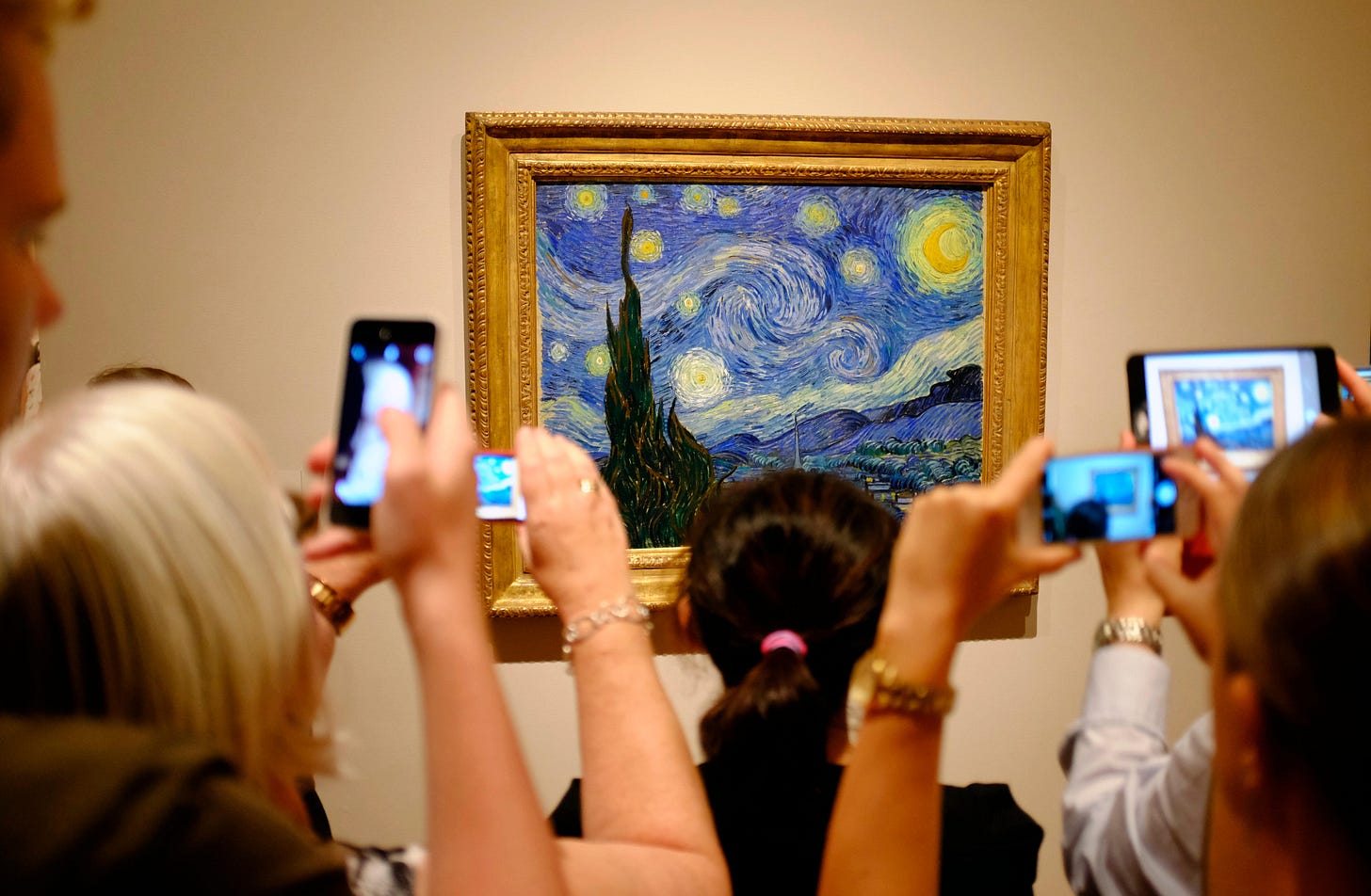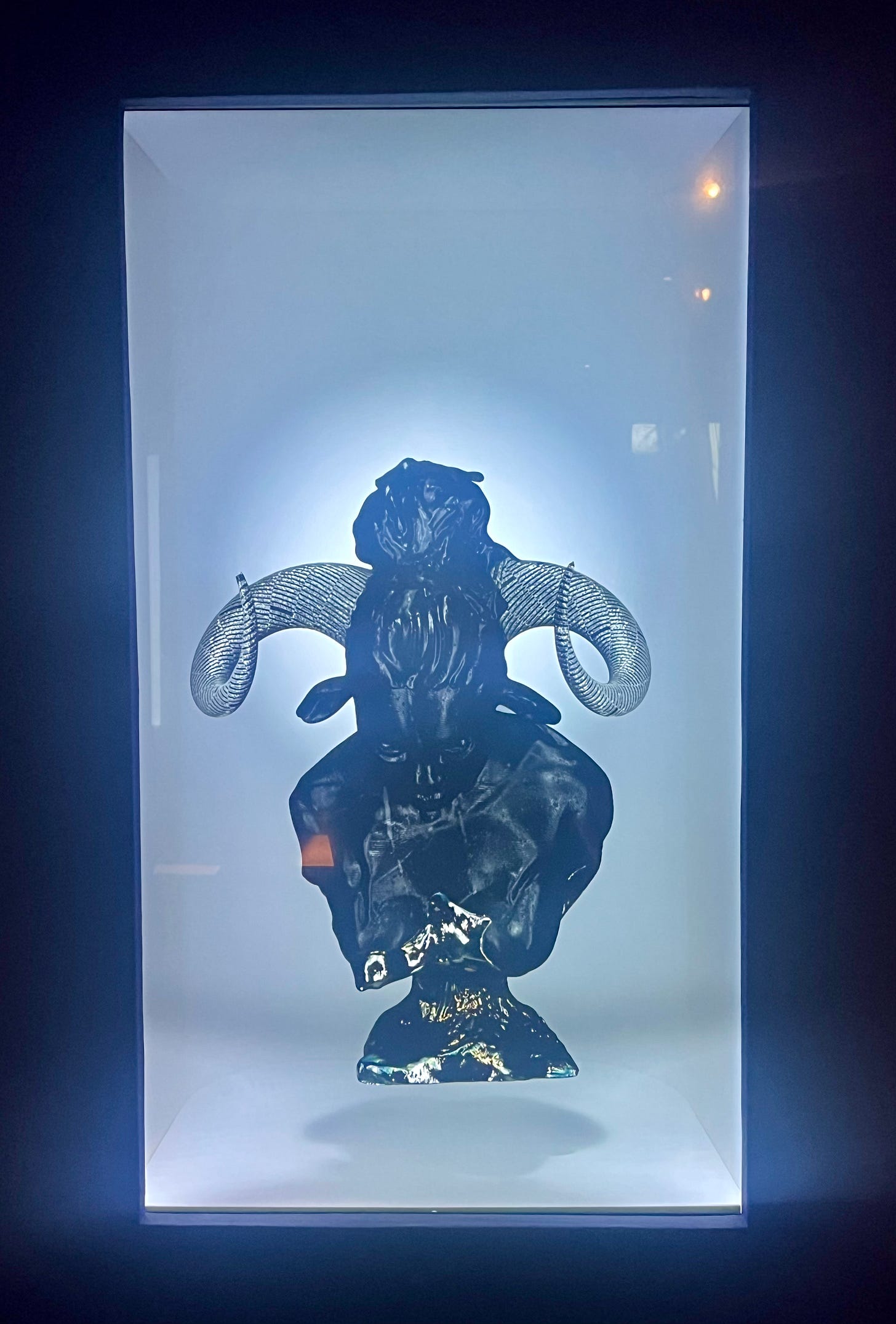I earned my master’s in contemporary art while working at a blue-chip gallery in New York—a city regarded as a hub for artistic innovation since the mid 20th century. As I studied the avant-garde—movements that expanded what art could be through formal innovation, conceptual risk, and a rejection of inherited beliefs and systems—I was struck by how little of that spirit I saw reflected in the galleries, institutions, and academic frameworks around me. Despite its self-image as a site of progress and provocation, much of the 21st century art world felt stagnant—tethered to inherited formats, familiar aesthetics, and a narrow system of value. Even in museums—where you’d expect to find more radical experimentation—few works proposed genuinely new forms, especially those shaped by digital tools or networked culture. The exclusion extended to my program, where the 60+ year history of digital art was largely omitted from the contemporary canon—reduced to brief mentions of Net and Post-Internet Art (I graduated in 2021!). Those disconnects are what led me to specialize in digital art—and the new technologies, forms, and infrastructures reshaping how art is made, shared, experienced, and collected today—because I’ve found the avant-garde is on the internet.
Despite the influence of digital culture on nearly every aspect of contemporary life, digital art remains underrepresented and undervalued in the mainstream art world—largely excluded from institutional narratives and overlooked by a market that still favors static objects and outdated hierarchies. But digital art isn’t at the fringe of contemporary practice, it’s at the forefront—with artists using cutting-edge technologies to expand the traditions of painting, sculpture, collage, photography, and performance, and constantly redefining what art can be. Some of the very qualities that have contributed to its marginalization—its openness, interactivity, resistance to fixed form, and its reproducibility—now resonate with next-generation art audiences who grew up online. Digital art doesn’t just challenge traditional systems of value—it inverts them, operating within a broader cultural logic that is transforming the art world.

From Scarcity to Scale
A hierarchy of media that privileges works on canvas and sculpture has been reinforced through repetition for centuries. Positioned behind gold frames, velvet ropes, and in white cube galleries—surrounded by insider language and financial barriers that gate access rather than invite it—these formats have become enduring signals of high culture. These codes aren’t just visual; they’re institutional, spatial, and economic. Proximity is controlled, access restricted. The result is a spectacle designed to generate distance and deference.

Travess Smalley’s CRAWL offers a different kind of experience, situating the viewer as a single pixel within an explorable, expandable digital landscape painting. Curated by Casey REAS—co-creator of Processing, which helped establish code as a medium for drawing and painting—CRAWL transforms generative logic into an immersive visual system. Spanning 512 unique maps revealed through navigation and interaction, the work can be experienced by anyone, anywhere, at any time (click on a map to explore, screen recording below shows interacting with 001_NIMBUSELMFISSURE).
When collected, multiple maps can be merged into CRAWL MULTILEVEL worlds: layered environments that deepen immersion and reflect on form, composition, and scale. With its modular design and evolving logic, CRAWL expands not only the landscape genre but how we see and engage with contemporary art. Where traditional artworks have long derived value from controlled access and passive spectatorship, CRAWL points to a different model—one where value emerges through interaction, participation, and shared experience.
From Reproduction to Aura
In 1935, Walter Benjamin argued that mass reproduction strips an artwork of its “aura”—its unique presence in a specific time and place. For him, aura came from physical singularity and proximity. Copy an image, circulate it, detach it from context—and that presence fades. But what happens when the original isn’t fixed or physical at all? What if it’s digital—living, interactive, and fluid by design?
Auriea Harvey, a foundational figure in Net Art, art games, and digital sculpture, has been creating natively digital works for over 30 years. Her Gray Matter series features fully realized 3D models situated in custom browser environments that invite immersion and intimacy. These aren’t static files—they’re responsive digital sculptures shaped by interaction, unfolding through presence and engagement rather than fixed form. Collectors have the option to fabricate a tangible bronze of their Gray Matter edition—but here, the physical version is the reproduction. The digital sculpture—dynamic, and defined by artistic intent—is the original.

Feral File is developing a hardware solution to extend this experience, enabling file-based artworks to be displayed beyond the browser, with full support for interaction as the artist intended. In an installation image below from Harvey’s 2024 retrospective at Museum of the Moving Image, one of her works appears in an inset, interactive 3D display. It feels native and elevated, bridging virtual materiality with sculptural presence. As our built environments and everyday objects become increasingly digitized, works like Gray Matter demonstrate how aura can persist—and even evolve—within the fluid systems of digital art.

From Image to Cultural Vessel
When I first saw crystalline work, unfamiliar with simulation pioneer John Gerrard’s practice, I thought: what a pain it would be to ship a robot from the North Pole. The illusion was convincing—and revealing. With digital art, it can be hard to know exactly what you're looking at: a video or a simulation, a still image or an interactive system. Its visual language—often associated with entertainment, gaming, or commercial design—can obscure artistic intent, especially for those conditioned to recognize fine art in static forms.
Crystalline work exemplifies this complexity. The 3D WebGL artwork is a rich cultural vessel, structured as a 365-day solar simulation. Set atop a frostless North Pole, a lone virtual robot arm generates intricate ice crystal formations in hourly intervals from the summer solstice of 2024 to the summer solstice of 2025 (shown in screen recording above). Together, the 8,760 crystalline work pieces form a yearlong public artwork on the internet, available to collect as individual works from the larger durational whole.
The performance can be viewed in real time or played back and is accompanied by optional generative sound composed in healing frequencies. Each work includes the ability to export a 4K image of the finished form for high-resolution print, along with a 3D model deployable in virtual environments—extending its presence across physical and digital realms.

Known for his large-scale public installations, Gerrard renders crystalline work as a blockchain-based social sculpture—linking each acquisition to ecological action, with 25% of revenues supporting Hometree’s reforestation of Ireland’s native woodlands. While contemporary art often examines or contests structures of power, crystalline work demonstrates how networked infrastructures and economic systems can augment artistic intent and enact real-world change.
From Gatekeeping to Social Networks
The traditional art market has long thrived as a system of exclusion—fortified by waitlists, private viewing rooms, letters of intent, and opaque pricing. Taste was dictated top-down, shaped by dealers, advisors, and collectors. By the time objects appeared in major galleries or museums, they had already accrued value—through branding, repetition, and proximity to institutional power. In many ways, gatekeepers have functioned like algorithms: conditioning perception, amplifying visibility, and conferring value through consensus.
But collecting doesn’t work like that anymore. It happens on Instagram, in Discord servers, across continents and platforms—outside the gravity of traditional art centers. Curation has shifted from private to public, from a privilege of access to a form of participation. What was once a whisper network is now a global one—where next-generation audiences discover, share, and shape culture together, in real time.
Speculation isn’t unique to NFTs—it’s always been part of the art market. The difference is speed and scale. The NFT boom didn’t invent hype cycles; it compressed them, accelerating the market's rhythms and forcing a reckoning the legacy art world can no longer sidestep. Amid this acceleration, a durable shift emerged: a cohort of next-generation collectors began treating digital art not as novelty or asset class, but as the cultural form of our time.
From Object to System
The backlash against this shift—often framed as the rise of Instagram art or “Red Chip” taste—isn’t just about quality. It’s object-oriented judgment struggling to operate in a system-oriented world. The logic has already inverted. It’s not about the medium—it’s about how cultural value is shaped today: through relevance, context, and connection. Digital culture has reshaped the landscape. Both digital and physical art now circulate within a fluid, networked system where visibility and engagement influence significance and value.
The exclusion of digital art has ruptured art’s historical continuity—its long tradition of reflecting the conditions and experiences of its time. Yet even as the traditional art world lags behind, next-generation collectors are already fluent in this logic. For them, digital objects are not inferior to physical ones, but increasingly integral—valued for their accessibility, interactivity, and capacity to shape culture across interconnected digital and physical worlds. In an oversaturated, overpriced contemporary art market, digital art stands apart—offering works that are both of our time and for our time. Because the object has dissolved into a system—one that carries not just the artwork, but the culture it creates.
—Lauren & The Feral File Team
About the Collecting Newsletter Series
Digital art doesn’t just respond to cultural shifts—it’s been driving them for decades. Through ambitious experimentation with digital technologies, artists have expanded visual language, invented new forms, and transformed the possibilities of what art can be.
At Feral File, we curate and exhibit groundbreaking digital work and build tools that redefine how art is experienced. This newsletter will be a space for sharing art, insights into an evolving market, and new ways to engage with digital art—not just as objects to own, but as living works activated through display, reshaping how art moves through the world.
To learn about available artworks, how to collect and display digital art, or say hello, email lauren@feralfile.com.




